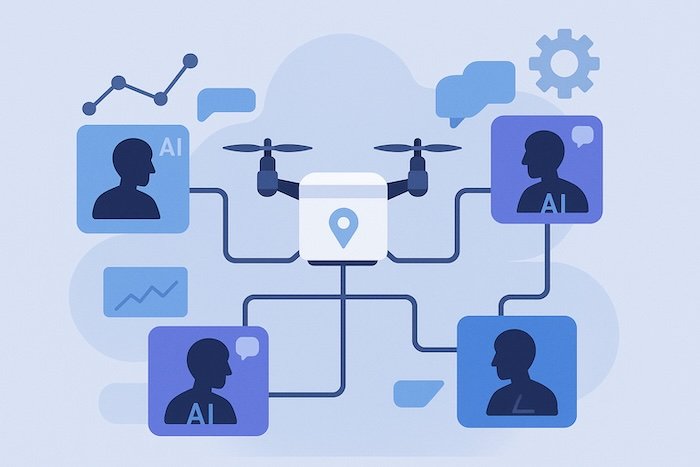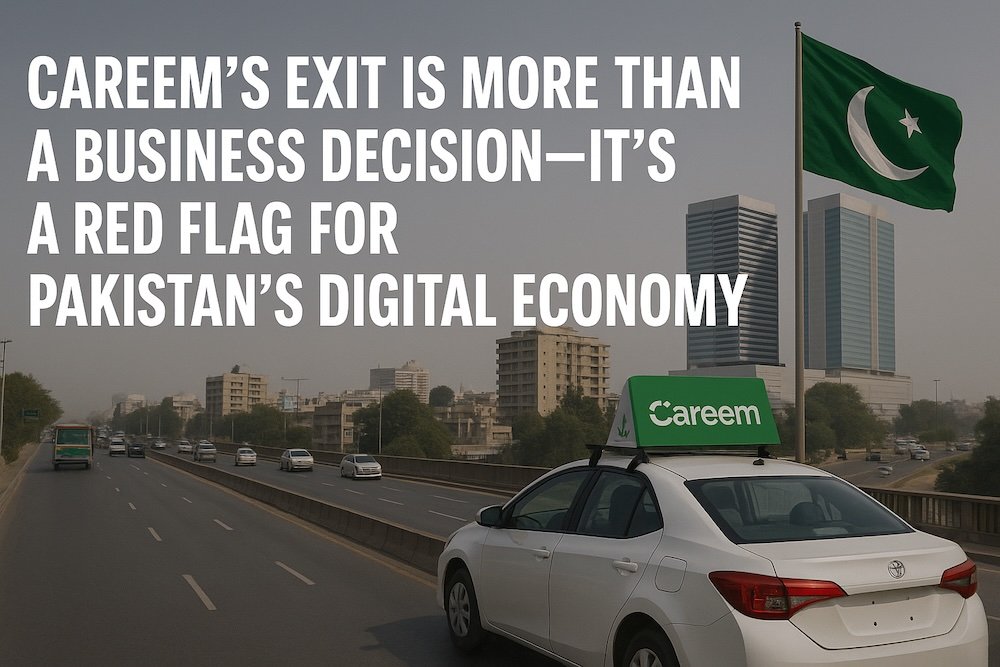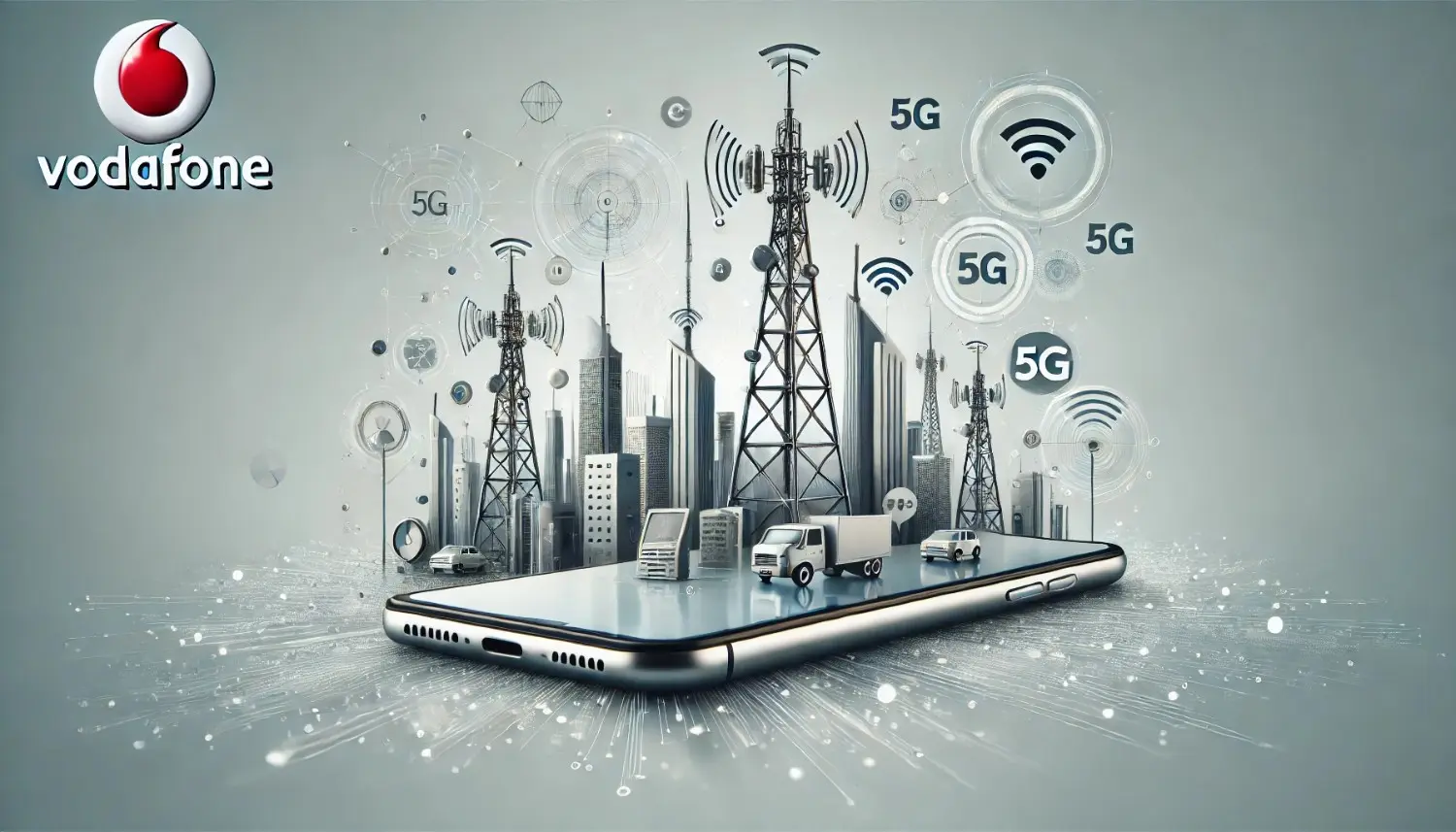Over the last month, the Middle East’s telecom landscape has been awash with high-impact deals, forward-thinking partnerships, and major technology trials that promise to reshape digital communications in the region—and beyond.
From expanded submarine cable capacities and sophisticated satellite launches to enterprise-level 5G solutions and cross-border voice agreements, it is clear that telecom operators, global tech vendors, and regional governments are intent on turning the Middle East into a world-class digital connectivity hub.
Below is an opinion piece that consolidates the latest news and developments in this dynamic sector, with some reflections on the opportunities and potential obstacles on the horizon.
1. Subsea Infrastructure and Dark Fibre Deals
Cisco and Telecom Egypt Boost 2Africa Subsea Cable Capacity
One of the most striking announcements is that Cisco is helping Telecom Egypt to enhance the capacity of the 2Africa subsea cable system—one of the longest subsea cable projects in the world. As data consumption proliferates in a hyper-connected global environment, submarine cables remain the undersea highways of internet traffic.
For Egypt, strengthening subsea infrastructure in partnership with a global networking giant such as Cisco is a strategic move. Egypt’s geographical position has always been a linchpin in global connectivity, straddling Africa, the Middle East, and Europe. This capacity upgrade could solidify Egypt’s status as a regional internet hub and attract further foreign direct investment, thanks to the promise of more resilient and higher-speed connectivity.
IQ Networks and GBI Sign Dark Fibre Deal
In a move that similarly emphasizes the growing appetite for robust infrastructure, IQ Networks and Gulf Bridge International (GBI) have signed a dark fibre deal, significantly expanding Iraq’s transit capacity to over 1 Tbps. This milestone highlights two broader themes. First, as demand for internet services in the region skyrockets, operators need to secure scalable connectivity. Second, Iraq, long underrepresented in the digital economy, seeks to leverage these partnerships for a leap in national bandwidth, fueling new business opportunities and potentially bridging connectivity gaps in underserved areas.
Nokia and STC Trial Terabit Data Centre Link
Another story underlining the region’s infrastructure ambitions is Nokia and STC (Saudi Telecom Company) conducting a trial of a long-haul terabit data centre link. Though these are still trials rather than full-scale commercial deployments, the message is clear: carriers in the region aim to push the boundaries of speed and capacity. If successful, terabit links could place Saudi Arabia at the forefront of high-performance data services in the Middle East, powering everything from cloud computing to mission-critical enterprise applications.
Opinion:
Subsea cables, dark fibre expansions, and experimental terabit links underscore the Middle East’s aim to become a key global connectivity corridor. As data demand doubles or even triples annually in some markets, these large-scale investments are timely. However, capital expenditures in infrastructure must be balanced with considerations around cybersecurity, data sovereignty, and environmental sustainability. For instance, the region’s scorching climate creates unique challenges for cooling data centers and cable landing stations. Nonetheless, the strategic focus on world-class fiber and cable routes is a strong indicator that regional operators and governments view digital infrastructure as a bedrock for economic diversification beyond oil and gas.
2. Partnerships and Expansions for Improved Connectivity
Ericsson Extends Managed Services Deal with e& in Egypt
Ericsson renewed its managed services deal with e& (formerly Etisalat) in Egypt, underlining the ongoing trend of operators outsourcing complex network operations to global telecom vendors. Managed services not only free operators to focus on market and service innovation but also ensure that the networks keep pace with global best practices.
e& and DE-CIX Team Up for a Middle Eastern IX Ecosystem
In a related development, e& also partnered with DE-CIX, one of the largest global internet exchange (IX) operators, to build a robust IX ecosystem in the Middle East. Internet exchange points are critical for reducing latency and improving local traffic routing. If done right, this partnership could position the Middle East as a cost-effective data transit hub, enticing content delivery networks and global cloud providers to localize traffic.
PLDT Global Extends ILD Voice Partnership with STC Group
On the international stage, the Philippines’ PLDT Global announced the extension of its ILD (international long-distance) voice partnership with STC Group. Although voice services may seem less glamorous than 5G or cloud-driven applications, international voice remains a cornerstone for diaspora communities and enterprise communications. The extension signals continued trust in Middle Eastern operators as essential connectivity partners, not just for the region, but for the broader global telecommunications map.
Opinion:
These partnerships underscore the region’s growing role as a trusted nexus for connectivity. Whether through outsourced managed services or forging alliances to bolster local and regional internet infrastructure, Middle Eastern operators are weaving themselves deeper into the global telecom tapestry. Such alliances, however, must navigate competitive dynamics—especially as local incumbents vie for market share and global vendors jockey to bring the most cutting-edge services. If successful, these deals expand coverage, reduce prices for end consumers, and foster innovation. But the test lies in execution: can these ambitious partnerships deliver on their promise without overextending budgets, duplicating efforts, or running into regulatory bottlenecks?
3. Satellite Expansions for Cloud, IoT, and More
Arabsat and ZainTech Team for Satellite-Based Cloud and IoT
The satellite segment is equally vibrant. Arabsat and ZainTech have joined forces to create satellite-based cloud and IoT services. Given the Middle East’s diverse geography—encompassing deserts, remote islands, and mountainous terrains—satellite coverage can unlock connectivity for both consumer internet and high-value enterprise use cases such as oil-and-gas exploration or border security.
SPACE42 and ICEYE Launch Second Foresight SAR Satellite
In another noteworthy satellite collaboration, SPACE42 and ICEYE launched their second Foresight SAR (Synthetic Aperture Radar) satellite. SAR technology is prized for its ability to capture high-resolution images in all weather conditions, day or night. This cutting-edge capability could have profound applications in disaster management, environmental monitoring, and infrastructure surveillance across the region.
SPACE42 Launches Thuraya-4 Satellite
Meanwhile, SPACE42 also launched Thuraya-4, underlining the importance of robust satellite-based communication solutions for maritime, aviation, and remote enterprise operations. This launch signals that the Middle East is not just reliant on Western satellite providers; it is actively nurturing its homegrown or regionally rooted satellite enterprises, contributing to the development of advanced space industries.
Opinion:
For years, satellite communications in the Middle East were a niche offering, often overshadowed by terrestrial or undersea cable expansions. Now, satellites are taking center stage. Whether for remote cloud connectivity, IoT, or advanced imaging, satellites are bridging gaps that traditional infrastructure cannot easily address. Looking ahead, as 5G and beyond-5G standards evolve, the interplay between terrestrial networks and satellite constellations will be a defining feature of the region’s telecom fabric. The challenge? Ensuring that these services remain affordable and that relevant regulatory frameworks keep pace with the rapid technological evolution.
4. 4G/5G Expansions and Enterprise Solutions
Nokia and Zain KSA Deploy 4G/5G Femtocells for Saudi Enterprises
On the terrestrial front, Nokia and Zain KSA have unveiled plans to deploy 4G/5G femtocells to bolster enterprise connectivity. Femtocells are small, low-power cellular access points that can dramatically improve indoor coverage and capacity. This solution is especially vital for high-security environments like banks or large-scale facilities, where consistent connectivity is paramount.
Echoing Trends Across the Region
Similar announcements from multiple news sources indicate that the joint drive by Nokia and Zain is part of a broader enterprise push to capitalize on 5G’s low latency and high throughput. Saudi Arabia, in particular, is pushing for digital transformation across multiple sectors—healthcare, finance, education, and the massive entertainment projects that are part of the country’s diversification strategy.
Opinion:
Bringing 5G indoors is arguably the next frontier in enterprise connectivity. While macro 5G networks serve broad public coverage, specialized enterprise solutions like femtocells unlock private networks, edge computing, and advanced analytics in real time. This can fuel Industry 4.0 initiatives, from smart factories to telemedicine. However, cost and complexity remain barriers, especially for mid-sized businesses. Operators and solution providers will need to structure compelling business cases, possibly through flexible pricing models and managed services.
5. Partnerships, Awards, and Service Innovations in the Gulf Region
Vodafone Qatar and Honor Partnership
A glimpse into consumer-facing partnerships comes from Vodafone Qatar, which inked a partnership with device maker Honor. As the Middle East’s smartphone penetration continues to rise, offering exclusive deals, bundled packages, or specialized digital services can differentiate operators in competitive markets like Qatar.
Khedmah and Vodafone Oman Unite
Across the border, Khedmah and Vodafone Oman have joined forces. Although details are sparse, such collaborations often revolve around enhancing digital service offerings, improving payment gateways, or co-marketing new plans. Oman’s telecom market, once dominated by a couple of state-backed incumbents, is gradually opening up, providing more competition and choice for customers.
Vodafone Qatar’s GSAS-DB 4-Star Rating
Vodafone Qatar also earned a GSAS-DB 4-Star rating—an environmental building certification that reflects sustainability measures and eco-friendly design. In a region where sustainability and energy consumption are moving up the agenda, telecom operators are increasingly highlighting green initiatives. From green data centers to solar-powered cell sites, environmental responsibility is no longer just a CSR checkbox but a genuine component of brand strategy.
Virgin Mobile Launches “Switch” Postpaid Plans
Meanwhile, Virgin Mobile introduced new “Switch” postpaid plans in the region, presumably featuring flexible data and roaming packages. With multiple international MVNOs and local telcos battling for subscriber share, marketing innovations and specialized service bundles can be strong differentiators.
Ooredoo Kuwait Recognized at the 2025 Stevie Awards
Lastly, Ooredoo Kuwait garnered recognition at the 2025 Stevie Awards, demonstrating how Gulf telcos are also focused on service quality, customer satisfaction, and innovation. Awards of this nature not only boost brand image but also signal a commitment to continually upgrading the customer experience.
Opinion:
The Gulf region’s telecom sector is not just about mega-mergers or infrastructure expansions; it is also about service diversification and branding. Operators like Vodafone, Virgin Mobile, and Ooredoo are increasingly personalizing their offerings for distinct customer segments. Meanwhile, the push for sustainability, whether through building certifications or green networks, reflects a gradual shift from a purely growth-centric mindset to one that balances social and environmental considerations. Yet, achieving authentic sustainability in telecom—an industry heavily reliant on energy-intensive data centers and networks—is no small feat. The real test is whether these operators can scale their green initiatives and achieve tangible reductions in carbon footprints, rather than piecemeal certifications.
6. Overarching Themes and Outlook
Having explored the various segments—subsea cables, satellites, managed services, 4G/5G solutions, and consumer-facing initiatives—some overarching themes emerge:
- Regional Integration and Global Connectivity: From subsea cable enhancements between Egypt and Africa to dark fiber agreements boosting Iraqi capacities and voice partnerships linking Saudi Arabia with the Philippines, it is clear the Middle East is not just a consumer of connectivity but an active provider.
- Enterprise Focus: Many announcements revolve around better enterprise connectivity—whether through managed services or femtocell deployments. This reflects a broader regional push to transform industries, align with “Smart City” visions, and diversify national economies.
- Satellite Renaissance: Arabsat, SPACE42, and other providers underscore a renewed emphasis on satellite capabilities, especially for IoT, cloud, and advanced remote sensing. The push is multi-faceted, catering not just to consumer satellite phones but also to enterprise requirements and specialized imaging use cases.
- Competitive Differentiation: In highly competitive markets such as Qatar, Kuwait, Saudi Arabia, and the UAE, operators distinguish themselves via strategic collaborations (e.g., Honor, Khedmah) and an increased focus on sustainability, quality-of-service, and next-gen network reliability.
- Challenges Ahead: Despite the optimism, challenges remain. Regulation across multiple jurisdictions can slow cross-border partnerships. The pace of technological change—from 5G-Advanced to future 6G—demands ongoing investment, potentially pressuring operators’ balance sheets. Finally, cybersecurity threats loom large; as networks scale and become more critical to the digital economy, they become prime targets for malicious actors.
7. Final Thoughts: A Convergence of Opportunity and Responsibility
These developments collectively paint a picture of a Middle Eastern telecom sector that is vibrant, ambitious, and deeply interconnected with global trends. As operators expand fiber networks, upgrade mobile technologies, and explore satellite-driven connectivity, the region moves closer to the cutting edge of the digital age.
Yet, with great opportunity comes great responsibility. Operators and policymakers must address potential pitfalls—ranging from data privacy and cybersecurity to bridging connectivity in rural or marginalized communities. They must also grapple with sustainability, ensuring that the race for faster speeds and expanded coverage does not come at the cost of environmental degradation or soaring carbon footprints.
From an outsider’s viewpoint, the Middle East’s telecom sector is poised to become a genuine global powerhouse, offering not just robust connectivity but also innovative cloud, IoT, and satellite-based services. Countries like Saudi Arabia, the UAE, Egypt, and Qatar are leading this charge, investing heavily in technology trials, infrastructure expansions, and strategic global partnerships.
In essence, these latest news stories and announcements collectively underscore a central theme: the Middle East’s transformation from a consumer of telecom technologies to a co-creator, and potentially a world-leading hub for connectivity solutions. If executed with foresight and responsibility, the region’s telecom players may not only meet surging domestic demand but also spearhead connectivity projects that reshape digital access far beyond Middle Eastern shores.
The future of telecom in the Middle East is bright—and the world is watching.















